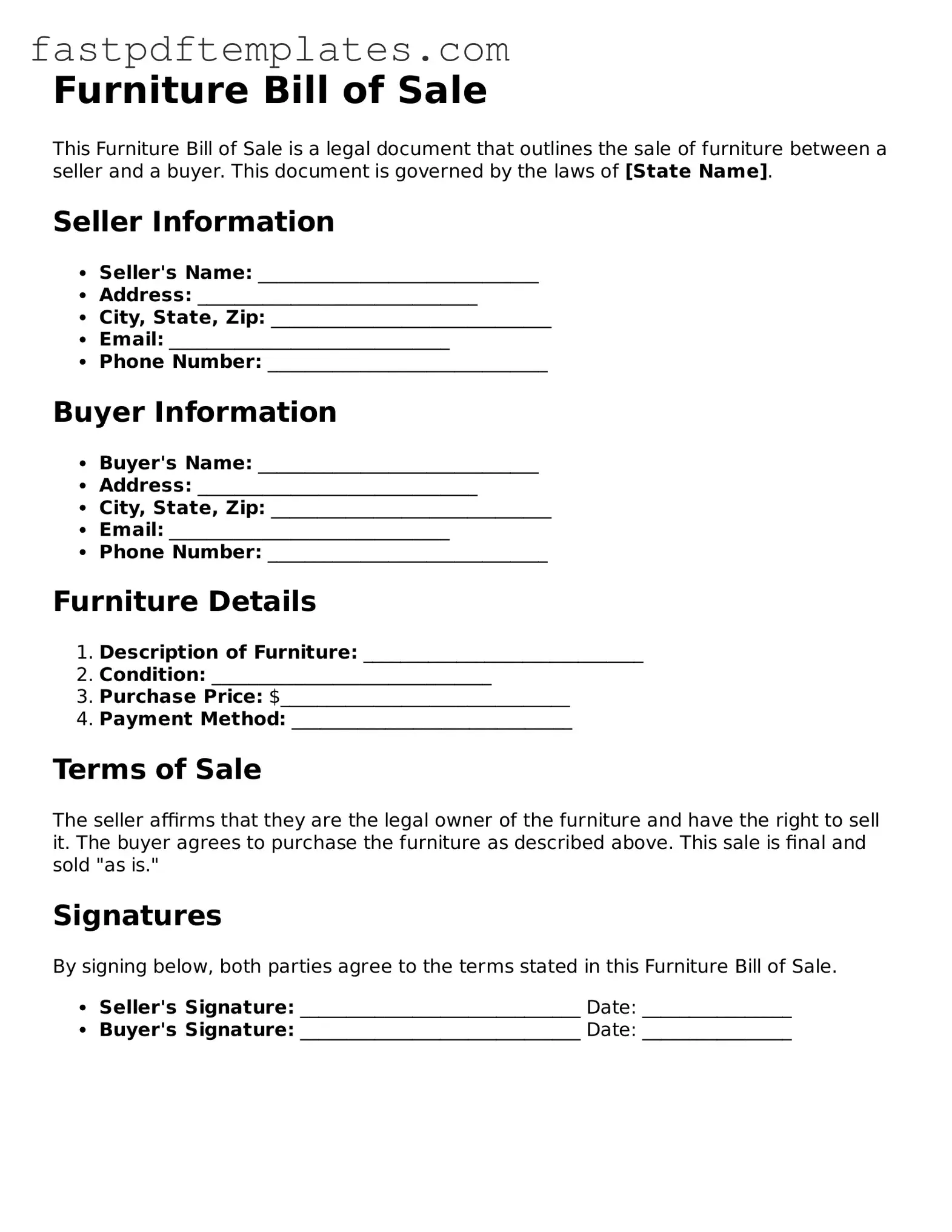The Furniture Bill of Sale form is similar to a Vehicle Bill of Sale. Both documents serve the purpose of transferring ownership from one party to another. In a Vehicle Bill of Sale, the seller provides details about the vehicle, such as make, model, and VIN, while the buyer's information is also included. This document often requires signatures from both parties, ensuring a legal record of the transaction. Just like the Furniture Bill of Sale, it protects the interests of both the buyer and seller by documenting the sale and the agreed-upon price.
Another comparable document is the Equipment Bill of Sale. This form is used for the sale of machinery or tools, typically in a business context. Similar to the Furniture Bill of Sale, it outlines the specifics of the equipment being sold, including its condition and any warranties provided. Both documents aim to establish a clear understanding between the buyer and seller, detailing what is being sold and at what price. This clarity helps prevent disputes after the transaction has been completed.
The Real Estate Purchase Agreement shares similarities with the Furniture Bill of Sale in that both are legally binding contracts. While the Furniture Bill of Sale pertains to personal property, the Real Estate Purchase Agreement covers the sale of real property. Each document includes essential information such as the buyer and seller's names, the purchase price, and any contingencies. Both forms serve to protect the interests of the parties involved, ensuring that all terms are agreed upon and documented.
The Personal Property Bill of Sale is another document that resembles the Furniture Bill of Sale. This form is broader in scope, covering various types of personal property beyond just furniture. Like the Furniture Bill of Sale, it includes details about the item being sold, the sale price, and the parties involved. Both documents aim to provide a clear record of the transaction, helping to establish ownership and protect against potential disputes.
In addition, the Business Sale Agreement can be compared to the Furniture Bill of Sale. This document is used when an entire business is sold, including its assets, which may encompass furniture. Similar to the Furniture Bill of Sale, it outlines the terms of the sale, including the purchase price and what is included in the sale. Both agreements ensure that all parties have a clear understanding of what is being transferred and under what conditions.
Lastly, the Lease Agreement has parallels with the Furniture Bill of Sale, particularly when furniture is included in a rental property. While the Furniture Bill of Sale is for ownership transfer, a Lease Agreement outlines the terms under which a tenant can use the property and its contents. Both documents specify the rights and responsibilities of the parties involved, ensuring that expectations are clear and legally enforceable. This helps maintain a good relationship between landlords and tenants, much like the relationship between buyers and sellers in a furniture transaction.
